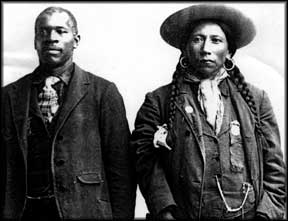(ThyBlackMan.com) Contrary to popular belief, African Americans are by no means a homogeneous population. They are composed of a variety, of now overlapping, but originally much more distinct, ethnic strands. In coastal South Carolina, there are the Gullah people, and in coastal Georgia the Geechies. (The two terms are often used interchangeably.) The Gullah are said to be descended from the Gola people of Angola, and the Geechies from the Gidzi people of Sierra Leone.
In Louisiana there are Creoles. The French colonizers of Louisiana were virtually all male. Hence, their children, “crillios,” or “those born in the colonies,” had to be Black and Native American. For example, Jean Baptiste Pont du Sable, who founded Chicago was a Creole. There is still a large community of Creoles in Louisiana today. Many Jazz bandleaders were  Creoles. It is said that, as intermediaries between the Blacks and the whites, they got European instruments into the hands of African musicians and thereby facilitated the development of jazz.
Creoles. It is said that, as intermediaries between the Blacks and the whites, they got European instruments into the hands of African musicians and thereby facilitated the development of jazz.
In New England we find Cape Verdians, Africans who migrated here in the 18th and 19th century aboard whaling ships that stopped in Cabo Verde, an island off the coast of West Africa, to resupply and pick up extra hands. In South Florida we have the Bahamian people who have for centuries been crossing over from the nearby Bahama islands, the most populous of which, are north of Miami. (The Bahamas are not in the Caribbean Sea but the Atlantic Ocean.)
It has been said that most African Americans are, in part, descended from Native Americans. However, few really celebrate this aspect of their heritage. Fifty years ago, in North Carolina especially, there were large groups of people who saw themselves as Black Indians. E. Franklin Frazier discusses them in depth in The Negro Family in the United States.
He also talks about “racial islands,” areas of the country where large numbers of enslaved Africans had lived in the midst of a surrounding sea of Europeans and Native Americans. After the Civil War they gradually intermixed with the surrounding peoples creating enclaves of individuals of what Frazier calls “indeterminate race.” He identifies Ahoskie, North Carolina and Mahwah, New York as just two examples. Also, we have the Caribbean and the recent immigrant African communities. In truth however, the Africans and Caribbean peoples have been coming here for nearly 150 years and blending in, over time, with the Africans already here. Doubtless, the process will continue.
















The Pointer Sisters are not Cape Verdean. They are from Oakland and are black Americans.
Thanks, Jamara. Who are the Dominickers and Brass Ankles? That last name sounds like “Tar Heels.” Are both Black Indians? I wonder were we once called colored because we consisted of these various ethnic strands? BTW the Pointer Sisters are Cape Verdian, and I do not believe they deny their Black heritage. Your thoughts, Jamara?
Interesting article though I don’t believe Gullahs and Creoles should be included with Cape Verdeans and Bahamians.
Those small races you mention include interesting groups like the Dominickers, Brass Ankles, The Jackson Whitse and many other groups who fought hard not to be considered black. Many of them have disappeared melting into the whire race largley and into the black race to a lesser extent.